The global laptop cooling pads market is projected to reach USD 629.52 million by 2029, driven by technological advancements and the rise of remote work. As demand for high-performance laptops increases, effective cooling solutions become essential for maintaining device longevity and performance.
Table of Contents:
– Market Overview: Cooling Pads
– In-Depth Market Analysis: Cooling Pads
– Key Factors When Selecting Cooling Pads
– Latest Technology Features in Cooling Pads
– Safety Standards and Certifications
– Energy Efficiency
– Upgrade Potential and Compatibility with Future Upgrades
Market Overview: Cooling Pads
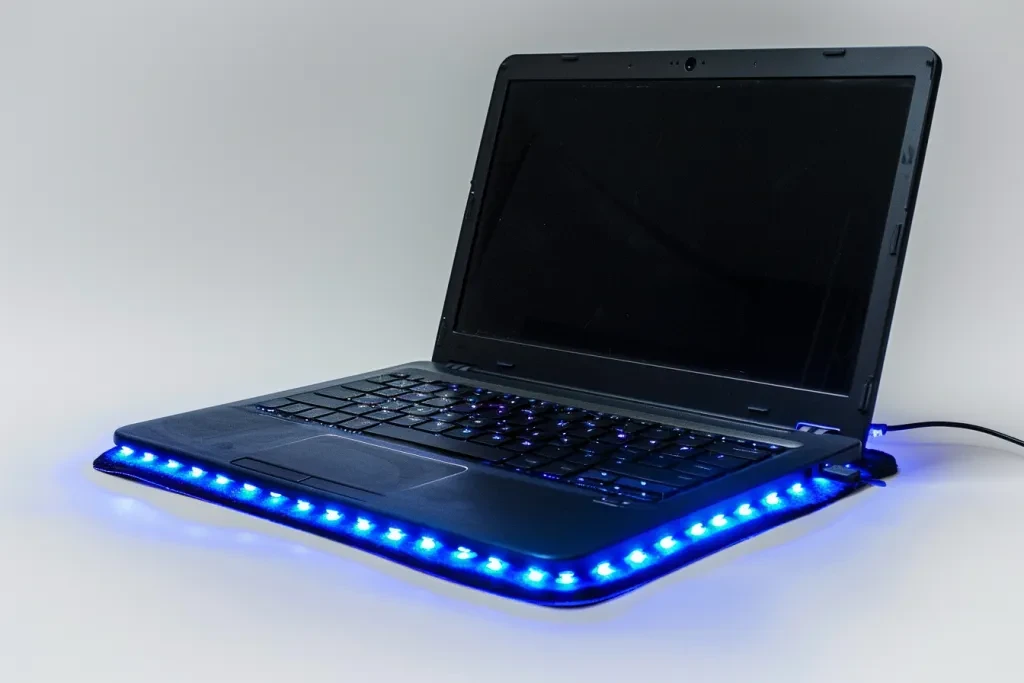
The global laptop cooling pads market is growing rapidly due to the increasing demand for high-performance laptops and the rise of remote work. In 2023, the market was valued at USD 351.77 million and is projected to grow at a CAGR of 8.71%, reaching USD 629.52 million by 2029. This growth is driven by the need for effective heat management solutions for laptops used in gaming, video editing, and professional tasks.
Active cooling pads, featuring built-in fans and advanced cooling mechanisms, dominate the market. These pads are favored for their efficiency in dissipating heat from high-performance laptops. North America holds a significant market share, attributed to the high adoption of gaming laptops and the prevalence of remote work.
Technological advancements have led to innovative cooling pads with adjustable fan speeds, heat-dissipating materials, and ergonomic designs. There is also a trend towards portable and aesthetically pleasing cooling pads, catering to users who prioritize both functionality and style.
In-Depth Market Analysis: Cooling Pads
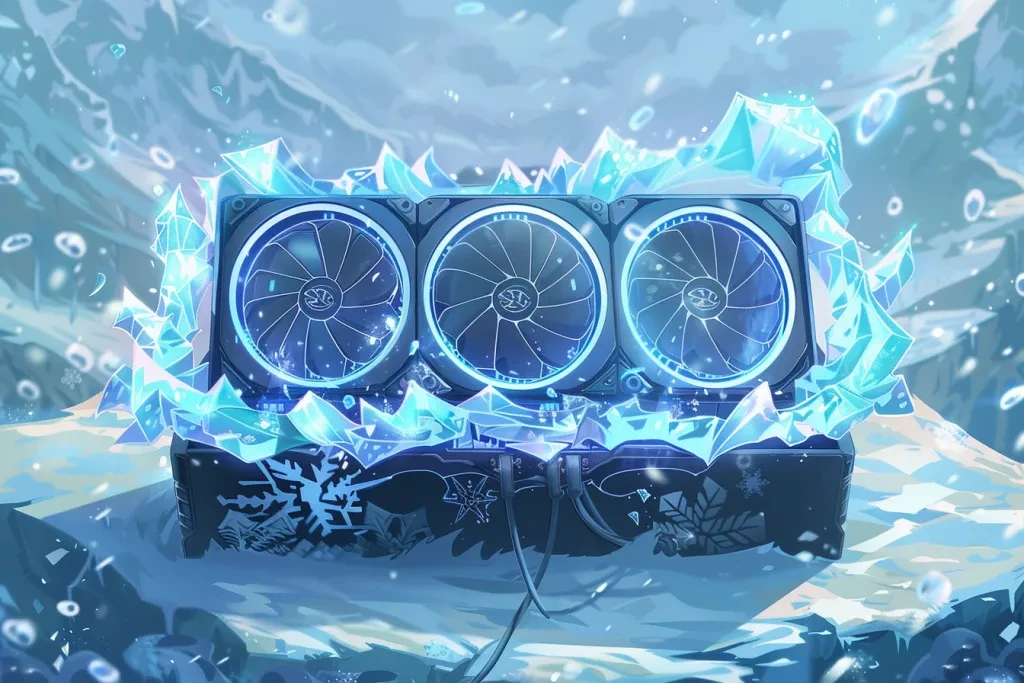
Key Performance Benchmarks and Market Share Dynamics
Cooling pads’ performance is primarily measured by their ability to reduce laptop temperatures effectively. Active cooling pads, equipped with multiple fans and adjustable speeds, are evaluated based on airflow capacity, noise levels, and power consumption. Passive cooling pads rely on materials with high thermal conductivity and ergonomic designs to enhance natural heat dissipation. In 2023, passive cooling pads held a significant market share due to their silent operation and portability.
Economic Influences and Consumer Behavior Shifts
Rising disposable incomes and increasing reliance on laptops for professional and personal use have positively influenced the cooling pads market. The shift towards remote work has heightened the need for efficient cooling solutions to maintain laptop performance during prolonged usage. Consumers are increasingly opting for cooling pads that offer both functionality and aesthetic appeal, driving demand for stylish and customizable designs.
Distribution Channel Preferences and Recent Innovations
E-commerce platforms have become the preferred distribution channels for cooling pads, offering a wide variety of options and the convenience of online shopping. Innovations in the market include cooling pads with smart features, such as temperature sensors and automatic fan speed adjustments, enhancing user experience and energy efficiency. The use of advanced materials, such as aluminum and phase-change materials, has further improved the performance and durability of cooling pads.
Environmental Regulations and Customer Pain Points
Environmental regulations are pushing manufacturers to adopt sustainable practices and materials in the production of cooling pads. Consumers are increasingly aware of the environmental impact of their purchases and prefer eco-friendly options. Common pain points for customers include noise levels and the bulkiness of some cooling pads, leading to a preference for silent and portable solutions.
Brand Positioning Strategies and Differentiation
Leading brands in the cooling pads market, such as Targus and Cooler Master, differentiate their products through innovative features and high-quality materials. Collaborations with laptop manufacturers to create co-branded cooling solutions tailored to specific models provide a competitive edge. Emphasis on product reliability, performance, and customer satisfaction is key to maintaining brand loyalty and market position.
Niche Markets and Seasonal Demand Patterns
Niche markets within the cooling pads industry include gaming enthusiasts and professionals who require high-performance cooling solutions for resource-intensive tasks. Seasonal demand patterns are influenced by the academic calendar, with increased sales during back-to-school periods and holiday seasons. The rise of esports and content creation has also contributed to steady demand throughout the year.
The global laptop cooling pads market is poised for significant growth, driven by technological advancements, the rise of remote work, and increasing demand for high-performance laptops. Manufacturers are focusing on innovation, sustainability, and customer satisfaction to capture market share and meet the evolving needs of consumers. As the market continues to expand, the emphasis on efficiency, portability, and aesthetic appeal will shape the future of cooling pad solutions.
Key Factors When Selecting Cooling Pads
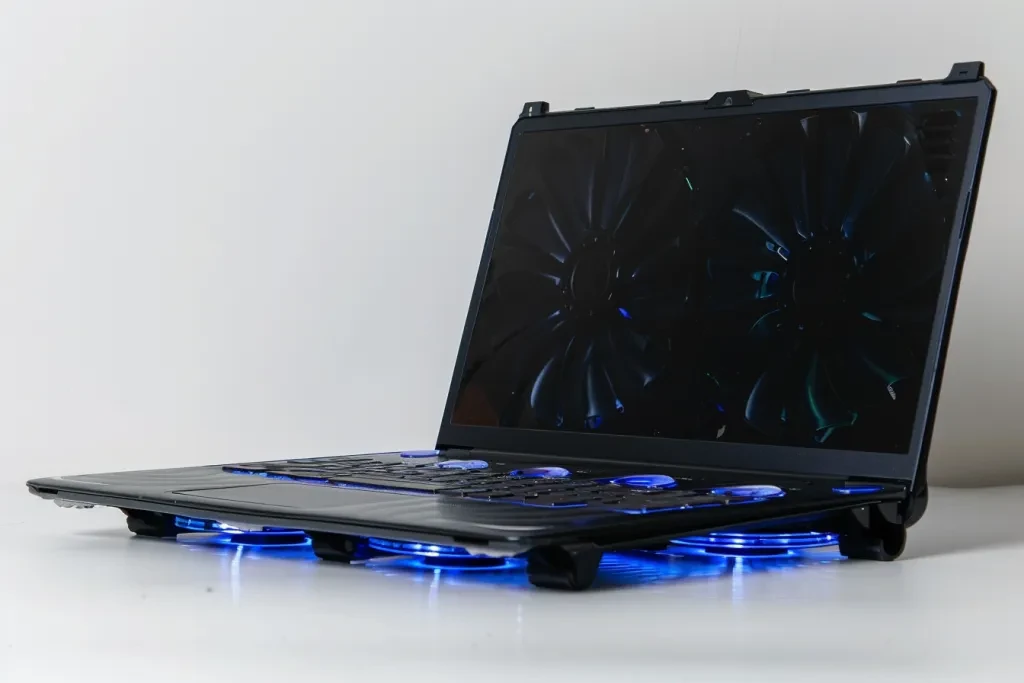
Types and Styles
Understanding the types and styles of cooling pads is crucial for making an informed decision. Cooling pads come in various designs, each catering to different needs and preferences. The primary types include passive, active, and hybrid cooling pads.
Passive Cooling Pads: These pads rely on natural heat dissipation without mechanical components. Typically made of materials with high thermal conductivity, such as aluminum, they are lightweight, silent, and maintenance-free. However, they may not be as effective in extremely hot environments or for high-performance devices.
Active Cooling Pads: These pads incorporate fans or other mechanical components to actively dissipate heat. They are more effective at cooling but can be noisier and require power, usually via USB. Active cooling pads are suitable for high-performance laptops and gaming systems that generate a lot of heat.
Hybrid Cooling Pads: Combining elements of both passive and active cooling, hybrid cooling pads offer a balanced approach. They typically feature a passive cooling base supplemented with fans for enhanced cooling efficiency. This type is ideal for users seeking a compromise between performance and noise levels.
Performance and Functionality
Performance and functionality are paramount when selecting a cooling pad. The cooling efficiency of a pad is determined by several factors, including fan speed, airflow, and design.
Fan Speed: Measured in revolutions per minute (RPM), higher fan speeds typically result in better cooling performance. However, increased fan speed can also lead to higher noise levels.
Airflow: Measured in cubic feet per minute (CFM), airflow indicates the volume of air the fans can move. Higher CFM values generally translate to better cooling performance.
Design: The design of the cooling pad, including the placement and number of fans, also impacts its performance. Pads with multiple fans or strategically placed large fans can provide more uniform cooling.
Build Quality and Materials
The build quality and materials used in cooling pads significantly affect their durability and effectiveness. Common materials include plastic, aluminum, and mesh.
Plastic: Lightweight and cost-effective, plastic cooling pads are popular but may not offer the best thermal conductivity.
Aluminum: Known for its excellent thermal conductivity, aluminum cooling pads are more effective in dissipating heat but can be heavier and more expensive.
Mesh: Often used in conjunction with other materials, mesh surfaces improve airflow and provide a non-slip surface for the laptop.
Size and Compatibility
Cooling pads come in various sizes to accommodate different laptop dimensions. It is essential to choose a pad that matches the size of your laptop to ensure optimal performance and stability.
Standard Sizes: Most cooling pads are designed for laptops ranging from 13 to 17 inches. Ensure the pad you choose can support the size and weight of your laptop.
Adjustability: Some cooling pads offer adjustable height settings, allowing you to customize the angle for better ergonomics and comfort.
Price Range and Budget
Cooling pads are available at various price points, catering to different budgets. Prices can range from as low as $20 to over $100, depending on the features and build quality.
Budget Options: Typically priced under $30, these cooling pads offer basic cooling functionality with fewer features and simpler designs.
Mid-Range Options: Priced between $30 and $60, these pads provide a balance of performance, build quality, and additional features such as adjustable height and extra USB ports.
Premium Options: Priced above $60, premium cooling pads offer advanced features, superior build quality, and enhanced cooling performance.
Latest Technology Features in Cooling Pads
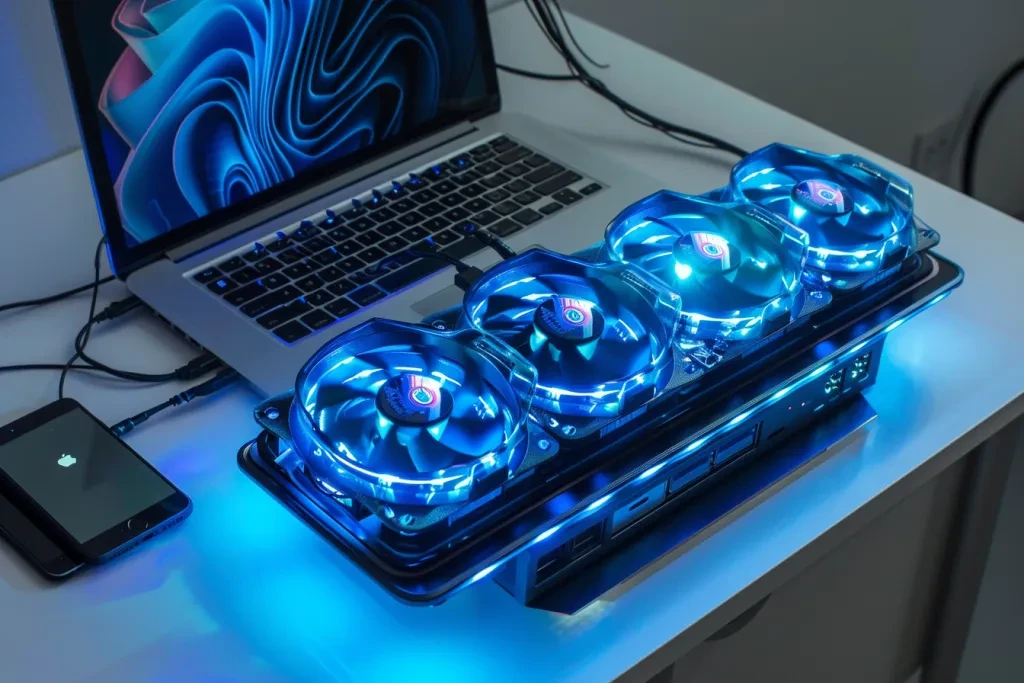
Smart Temperature Control
Modern cooling pads are increasingly incorporating smart temperature control features. These systems automatically adjust fan speeds based on the device’s temperature, ensuring optimal cooling efficiency while minimizing noise. This feature is particularly useful for users who require dynamic cooling solutions for varying workloads.
USB Pass-Through Ports
Many cooling pads now include USB pass-through ports, allowing users to connect additional devices without losing USB functionality. This is especially beneficial for users with limited USB ports on their laptops.
RGB Lighting
RGB lighting has become a popular feature in cooling pads, particularly among gamers. These pads offer customizable lighting effects that can be synchronized with other RGB-enabled devices, enhancing the setup’s aesthetic appeal.
Ergonomic Designs
Ergonomics play a significant role in user comfort, and modern cooling pads often feature adjustable height and angle settings. These designs help reduce strain on the wrists and neck during extended use, making them ideal for both work and gaming.
Noise Reduction Technology
Noise can be a significant concern with active cooling pads. To address this, manufacturers are incorporating noise reduction technology such as quieter fans and sound-dampening materials. This ensures effective cooling without creating a distracting environment.
Safety Standards and Certifications
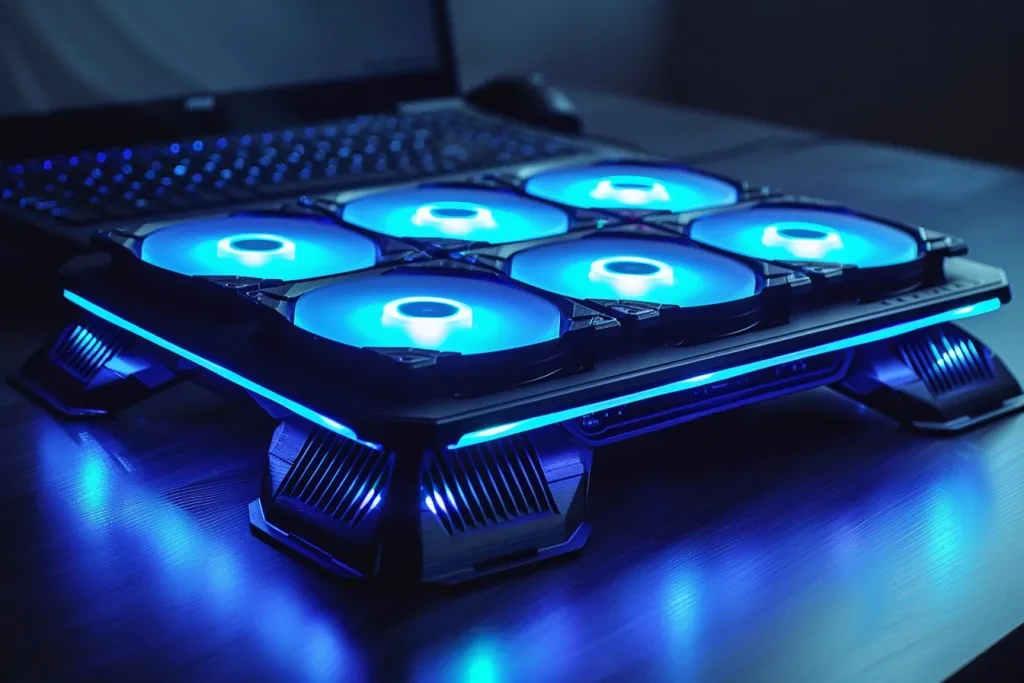
When selecting a cooling pad, it is essential to consider safety standards and certifications to ensure reliable and safe operation. Look for pads that comply with international safety standards such as CE, RoHS, and FCC. These certifications indicate that the product has undergone rigorous testing for safety, environmental impact, and electromagnetic interference.
CE Certification
CE certification indicates that the product meets the health, safety, and environmental protection standards for the European Economic Area (EEA). This certification is crucial for ensuring the product’s safety and reliability.
RoHS Compliance
RoHS (Restriction of Hazardous Substances) compliance ensures that the cooling pad does not contain harmful substances such as lead, mercury, and cadmium. This certification is important for environmentally conscious consumers.
FCC Certification
FCC certification ensures that the cooling pad complies with the electromagnetic interference standards set by the Federal Communications Commission. This is particularly important for active cooling pads with electronic components.
Energy Efficiency
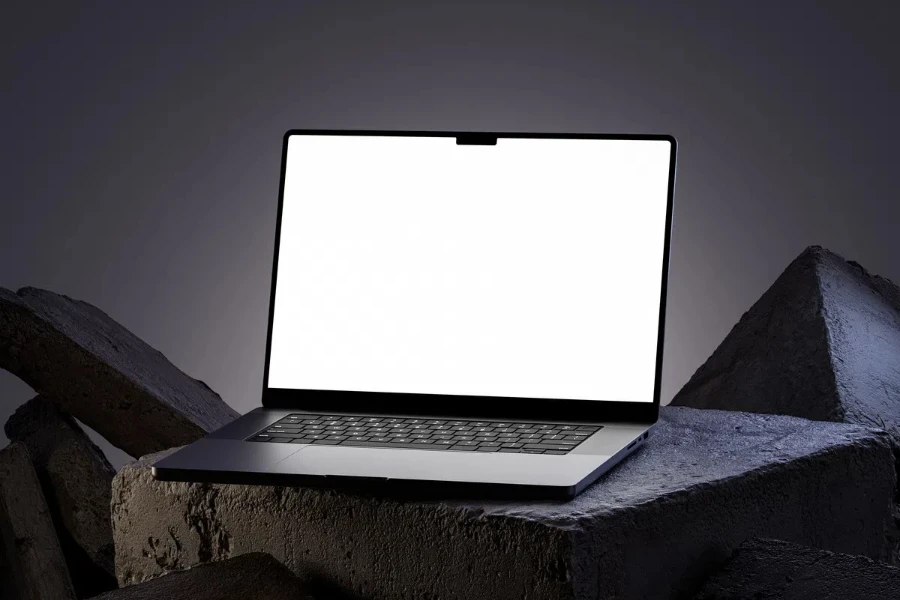
Energy efficiency is an important consideration for cooling pads, especially those with active components. Efficient cooling pads consume less power, reducing the overall energy consumption of your setup.
Power Consumption
Check the power consumption specifications of the cooling pad. Lower power consumption not only saves energy but also reduces the load on your laptop’s USB ports.
Eco-Friendly Features
Some cooling pads are designed with eco-friendly features such as energy-saving modes and automatic shut-off functions. These features help minimize energy usage and extend the lifespan of the cooling pad.
Upgrade Potential and Compatibility with Future Upgrades

As technology evolves, it’s important to choose a cooling pad that can accommodate future upgrades to your laptop or other devices.
Modular Designs
Some cooling pads feature modular designs that allow users to upgrade or replace components such as fans. This flexibility ensures that the cooling pad remains effective even as your needs change.
Compatibility with New Devices
Ensure that the cooling pad is compatible with newer laptop models and other devices. Check for adjustable sizes and versatile designs that can accommodate different form factors.
Conclusion
In summary, when selecting a cooling pad, consider factors such as types and styles, performance and functionality, build quality and materials, size and compatibility, price range and budget, latest technology features, safety standards and certifications, energy efficiency, and upgrade potential. By evaluating these aspects, you can choose a cooling pad that meets your needs and enhances the performance and lifespan of your devices.





 বাংলা
বাংলা Nederlands
Nederlands English
English Français
Français Deutsch
Deutsch हिन्दी
हिन्दी Bahasa Indonesia
Bahasa Indonesia Italiano
Italiano 日本語
日本語 한국어
한국어 Bahasa Melayu
Bahasa Melayu മലയാളം
മലയാളം پښتو
پښتو فارسی
فارسی Polski
Polski Português
Português Русский
Русский Español
Español Kiswahili
Kiswahili ไทย
ไทย Türkçe
Türkçe اردو
اردو Tiếng Việt
Tiếng Việt isiXhosa
isiXhosa Zulu
Zulu